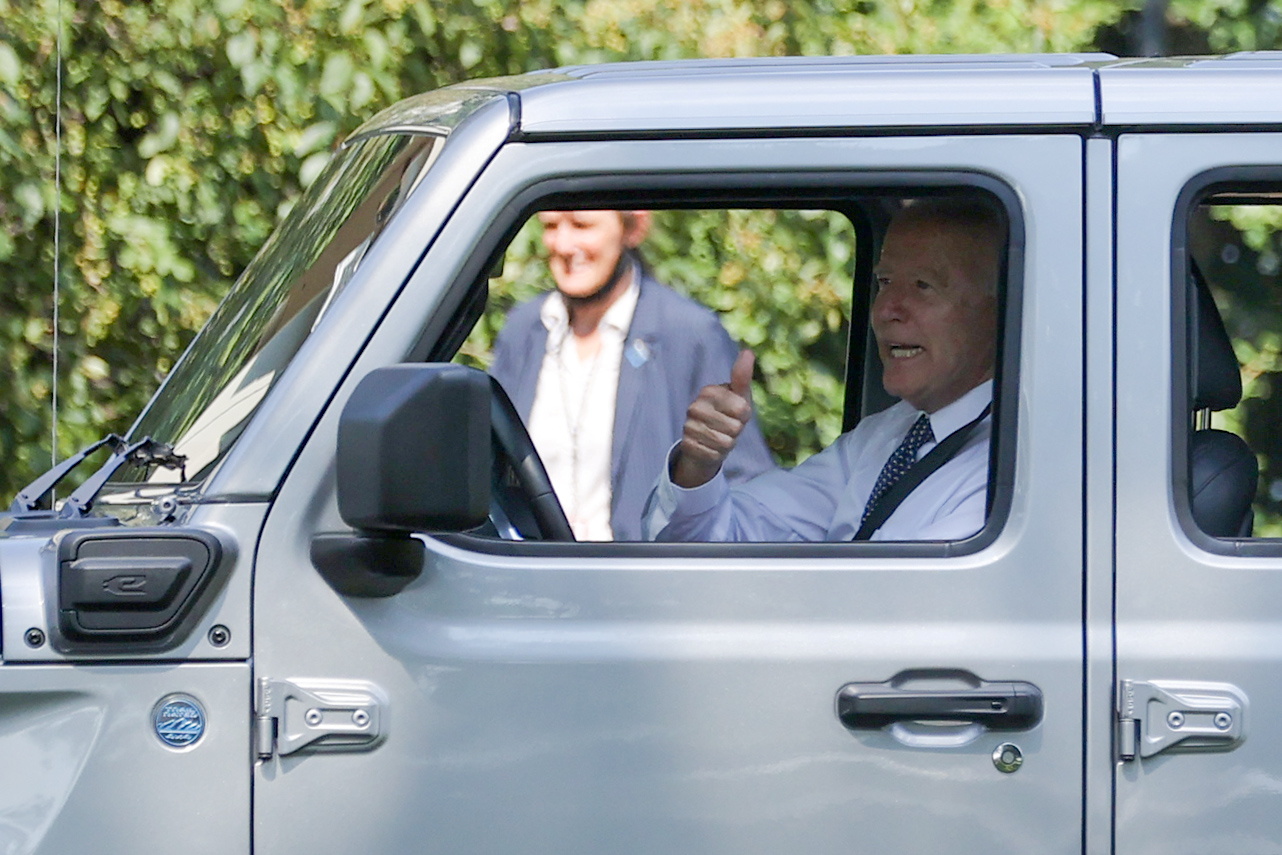
Joe Biden, U.S. President: “This is an executive order strengthening America’s leadership and clean cars and trucks. And again, let me start off by thanking the CEOs as well as the UAW. You all, all you elected are the reason why it’s happening. Thank you. Thank you. Thank you.”
“By the way, my dad was in the automobile business, he sold Fords for a while, but mostly General Motors projects, products. But you see that sucker over there, zero to 60 in 4.1 seconds. It’s all electric. I tell you what, and I want to say publicly, I have a commitment from (General Motors CEO) Mary (Barra) when they make the first electric Corvette. I get to drive it right, Mary? You think I’m kidding? I’m not kidding. And my entire Secret Service detail went, oh, my God. Let’s go.”
“Today, labor and industry, state and local leaders are all working together to write the next chapter of the American story. As I’ve said before, we’re in competition with China and many other nations for the 21st century. To win we’re going to have to make sure the future will be made in America. You know, back in May, I toured the Ford plant, as I mentioned, the state of the art facility in Dearborn, where the UAW workers like Bernie are building the first ever all electric Ford 150. And as I said, the best part is I got to drive it. It is incredible that just like the other vehicles that are behind me today. They are vision of the future that is now beginning to happen. A future of the automobile industry that is electric battery, electric plug in hybrid, electric, fuel cell, electric. It’s electric and there’s no turning back. The question is whether we’ll lead or fall behind in the race for the future. It’s whether we will build these vehicles and the batteries that got them to where they are in the United States here in the United States or we’re going to have to rely on other countries for those batteries.”
“We have a playbook and it’s going to work. Today, I’m announcing steps we’re taking to set a new pace for electric vehicles. First and following through on the campaign commitment to reverse the previous administration’s short sighted rollback of vehicle emissions and efficiency standards and I’m doing so with the support of the auto industry, the automobile industry. Today the Environmental Protection Agency and the Department of Transportation are unveiling proposals to do just that. These agencies are beginning to work on the next round of standards for a broad class of vehicles, for cars, SUVs, pickup trucks, medium and heavy duty vehicles. Importantly, we have announcements today from automakers representing nearly the entire auto industry market who have who have positioned around the ambition of 40 to 50% of all vehicles sold by 2030 in America, being electric. This is a big deal.”










